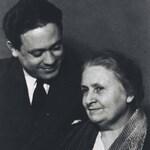How Does One Become a Montessori Teacher?
by Matt Bronsil, author of English as a Foreign Language in the Montessori Classroom

Maybe you are already a teacher wanting to really change things up. Maybe you are a parent that wants to know more about Montessori so you can teach your own child. Maybe you are just beginning to look at careers and finding out what you want to become. Whatever the reason you are looking into Montessori training, it can be daunting to know where to start.
The Montessori Method is a way of, among other things, creating an environment that fits the needs of the students in it. As a Montessori teacher, you will primarily be responsible for:
- Helping to develop concentration in students.
- Develop a love of learning in the students.
- Understand childhood development.
- Ultimately develop the child's own independence.
Your role as a teacher will be a much more active role in observing your students and less as the center of attention for your students. Your job is not to simply feed information to students for them to learn, but your role will be to guide the students so they can develop their own understanding of concepts, the world, and themselves. This is a big difference from most forms of education, where the teacher is the main focus during the class period. Maria Montessori said it best when she said that it is the ultimate goal of the teacher to be able to say, "The children are now working as if I do not exist." This means that there will be entire periods where the children simply work and do not need you, nor even realize you are there. It is a wonderful thing to observe thirty or so students working on their own without your help - and learning a lot from it.
There is a lot to learn to become a Montessori Teacher. In fact, we often don't use the term teacher, but "director" and "directress" since your primary role is directing and guiding the students to engage in the environment and less about teaching them in a traditional sense of the word. Still, for the sake of clarity on this article, I will continue to use the term "teacher."
The Role of the Teacher
Observation

As a Montessori teacher, a large part of your training will focus on the art of observing children. Observation is the key to the Montessori environment. Close observation of the children is essential to following the child and helping to understand the needs of both the individual child and the classroom as a whole. One of the hardest thing a new teacher can learn is to sit back and observe quietly, as we often feel responsible to give as much time to working with our students as we possibly can.
We can look for several things as we observe:
- Which materials are being used?
- Is a child avoiding a particular area? Why?
- Do you see a child not engaging in the work? Why?
- Which children work in pairs or groups? Which ones work alone?
- Record the starting and stopping times for children's work.
The number of things to observe is endless. It is also important to note how you observe children. We often bring many biases to what we are seeing, and those need to be removed. To do this, we have to be specific about what we actually saw, not what our judgement is on it. For example, take a look at the following note a teacher might take while observing:
John is working with the red knobless cylinders. He placed the top cylinder on and it fell off. John got upset and decided to put the work away.
This assumes John was upset, but perhaps he was not. Write down exactly what you saw. A better example might be:
John is working with the red knobless cylinders. He placed the top cylinder on and it fell off. John clenched his fist, his muscles tensed up, and his face turned red. While taking the rest of the tower down, his hands relaxed and his face was no longer red. He calmly put the cylinders in the box and returned the box to the shelf after pushing in his chair.
This explanation gives you better insight into what happened. He may have been mad, but you wrote down physical cues you can find that give off those signals and watch for them in the future. You also have the memory that he did apparently calm down and how he handled the situation.
A good Montessori training program will help you learn the art of observation.
Materials

There are specialized materials throughout the Montessori classroom that we use. As a teacher, you must know the proper way to use these materials, the sequence they are presented in, exactly how to present the materials, and be ready to decide when a child shows an interest in the materials and is ready to have that material presented.
There are some main areas of the Montessori classroom:
- Practical Life: deals with a lot of muscle coordination and daily-living skills.
- Sensorial: Focuses on refining the five senses.
- Math: Montessori has a fantastic math curriculum.
- Language: Montessori also has a great language curriculum taylored to the age of the students in the classroom.
- Cultural/Art/Science: Many of the activities in these areas are so integrated, that they are often put together.
Part of your job as the Montessori teacher will be to know how to use these materials and present them to the students, so it is important to know how to use them well and continue practicing, even after you get your certification.
Parent Education

As a Montessori teacher, you will be responsible for educating your parents on what Montessori Education involves. Many schools have trouble in this area because they do not educate the parents well and the parents demand things such as several worksheets or large performances that distract from the goals of Montessori Education. You must be responsible for protecting the child's rights to do age appropriate activities and the right to have a work period free of distractions. These are some things that many parents do not understand, especially if they are new to your school.
To combat this, I strongly recommend having parent education nights at your school. These are workshops for your parents to come and learn about what Montessori is or different aspects about your school, child development, or your classroom. This helps build a community and basic understanding of Montessori. By occasionally opening these to the public, it also allows others in your community to participate in the school and become involved, which will lead to more students down the line.
Even with these parent education nights, you still will be asked about Montessori from the parents in your school. You will have to have confidence in the system and have observed enough to know how it is benefiting that parent's particular child. So the two skills listed above are crucial to success.
Finding a Training Program
A natural wonder, amazement, and love of children is needed in this profession. You must have a certain sense of wonder of how children think. You must be in awe to see children learn things you never thought possible. You must have a deep love and respect for the way children view the world. More importantly, you must want to discover these things in children and see them develop.
If this sounds like something you would have an interest in, now is a good time to start looking for a training program and enquiring further. Note that not all training centers are the same in terms of quality and recognition. People often ask me what training centers are good and which are not, but the answer is often more complicated than we think. To learn more about taking Montessori training and finding a training center that is right for you, click on the video link below.
![]() Video Link: Choosing the Right Montessori Training Center
Video Link: Choosing the Right Montessori Training Center
![]()
Matt Bronsil is the author of these posts. He can be contacted at MattBronsilMontessori@gmail.com. To contact him or sign up for updates to the site, visit our contact page.
<<< Back to the full article list <<<
Recommended Books
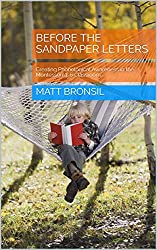


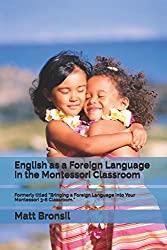
Montessori Second/Foreign Language Blogs

Learn Easily
Teahing Videos
Teaching Reading
Teaching Reading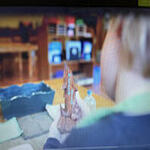
Montessori's Different
Montessori is Different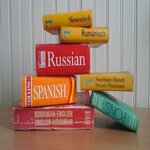
EFL and Montessori
EFL and Montessori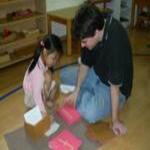
Become a Teacher
Become a Montessori Teacher
Silent E
Silent E
Shining Pennies
Shining Pennies